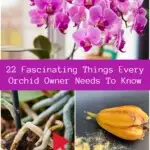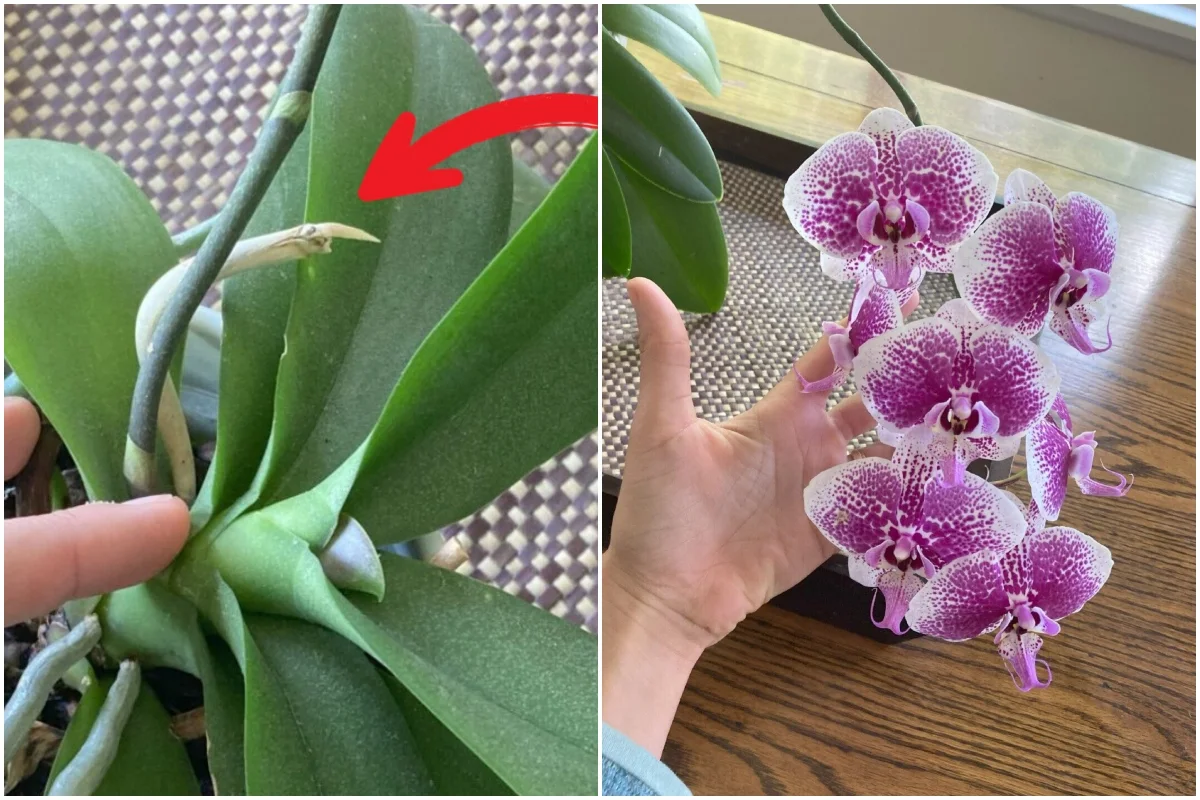
While orchids are becoming increasingly common in garden centers (and even grocery stores!), an aura of mystery remains around them.
Their svelte form and tropical plumage can feel intimidating for beginning home horticulturists. But that’s a misconception. Orchids thrive under the proper care, and it’s surprisingly easy to provide (especially if you can avoid these common mistakes.)
Here’s a breakdown of what you need to know whether you have dozens of orchids in your home or you’re just about to bring your first one home.
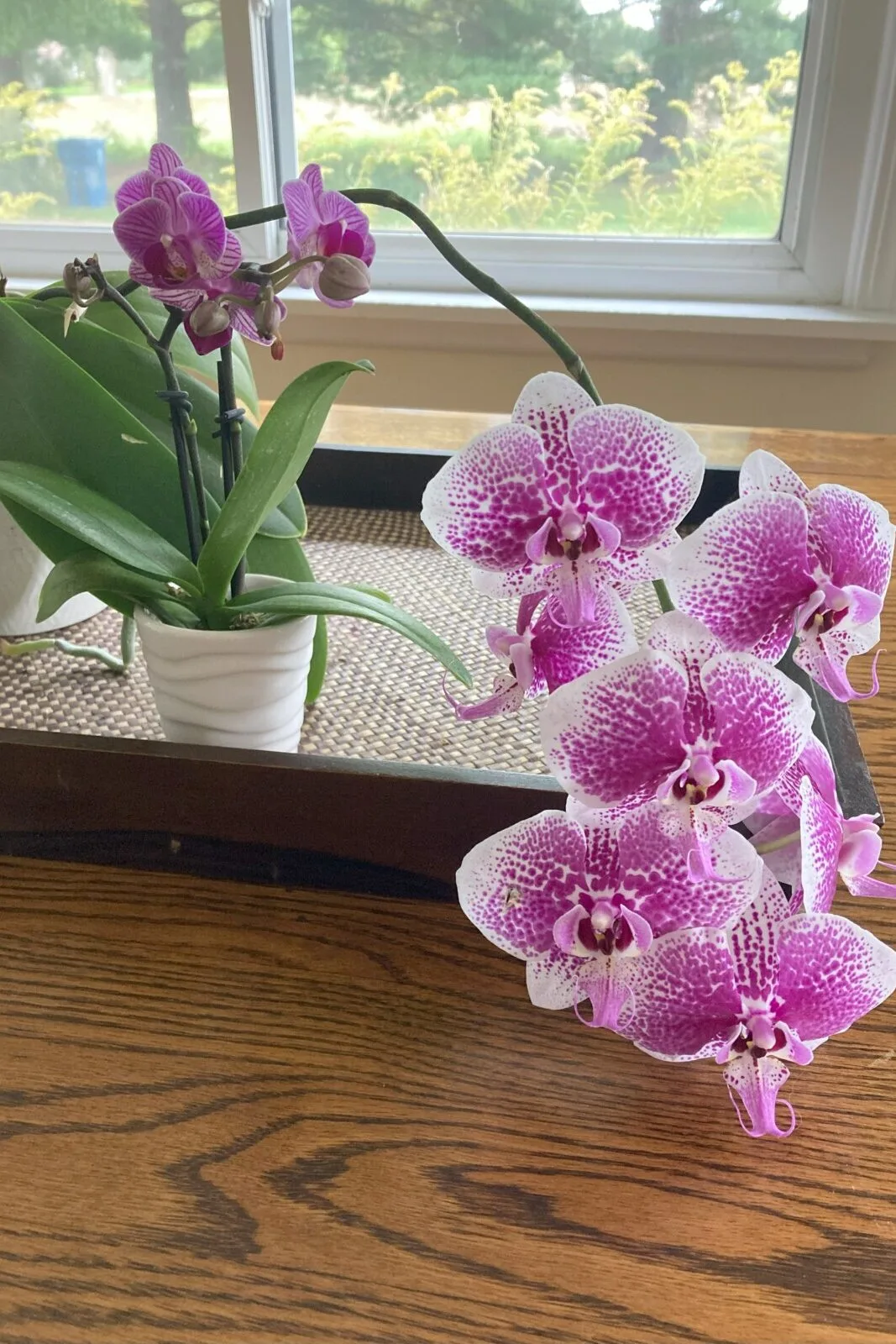
1. There are 25,000 types of Orchids in the World.
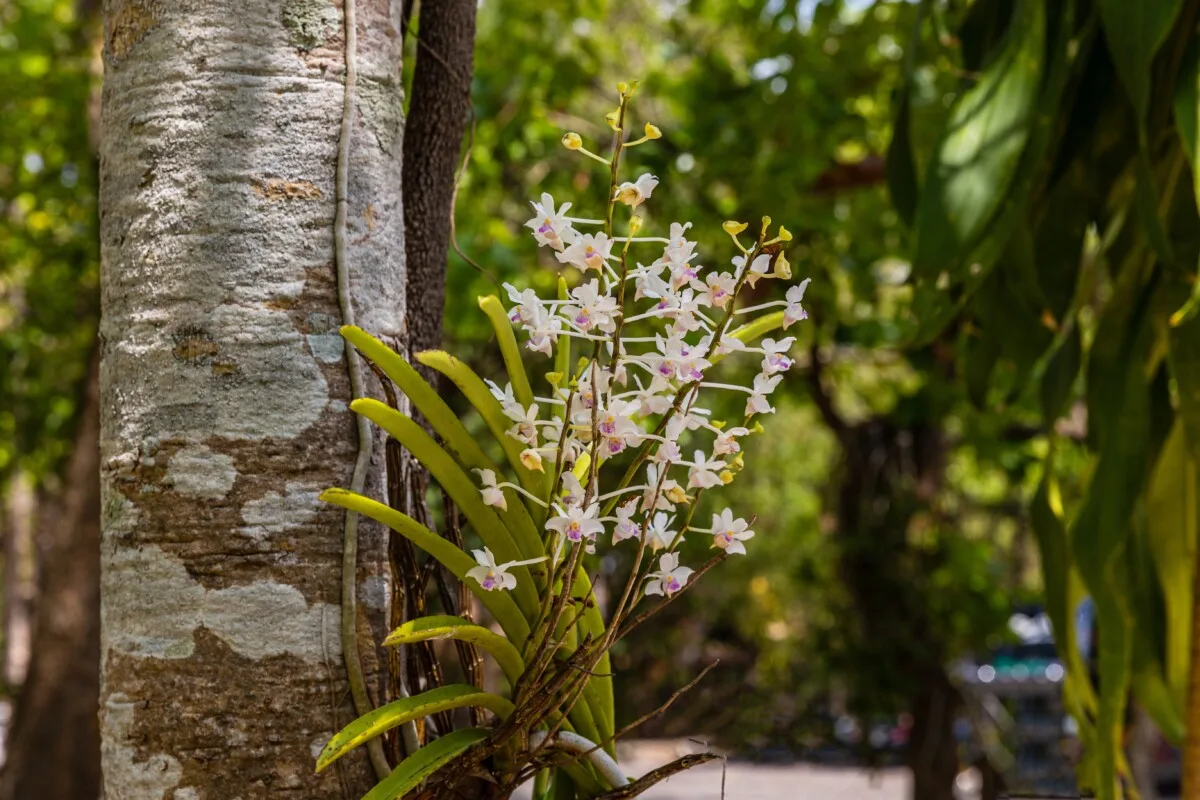
Not only are orchids the largest family of flowering plants in the world, but they are also some of the oldest flowers still in existence. Orchids thrive in diverse ecosystems and are found on every continent except Antarctica.
These versatile flowers grow in tropical and sub-tropical climates throughout South and Central America and Asia, as well as the deserts of New Zealand and Australia. The United States alone has over 200 native varieties.
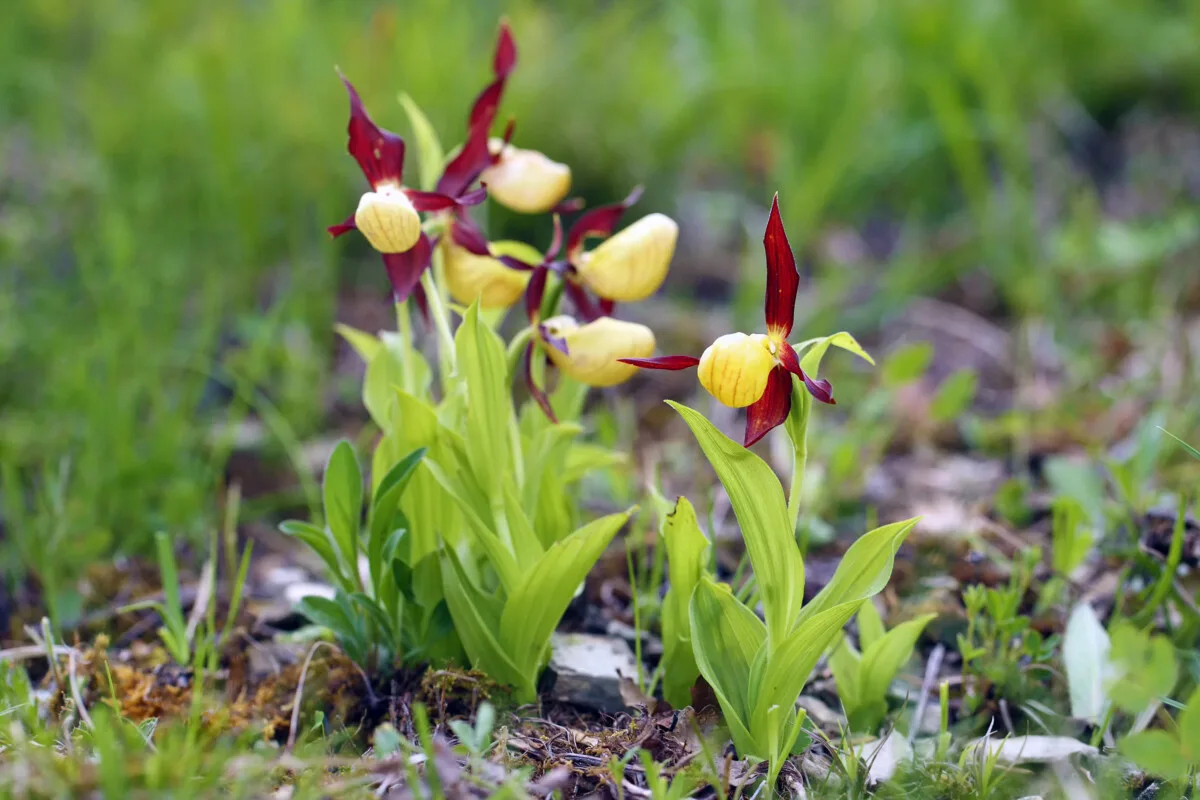
2. Vanilla is an Orchid!
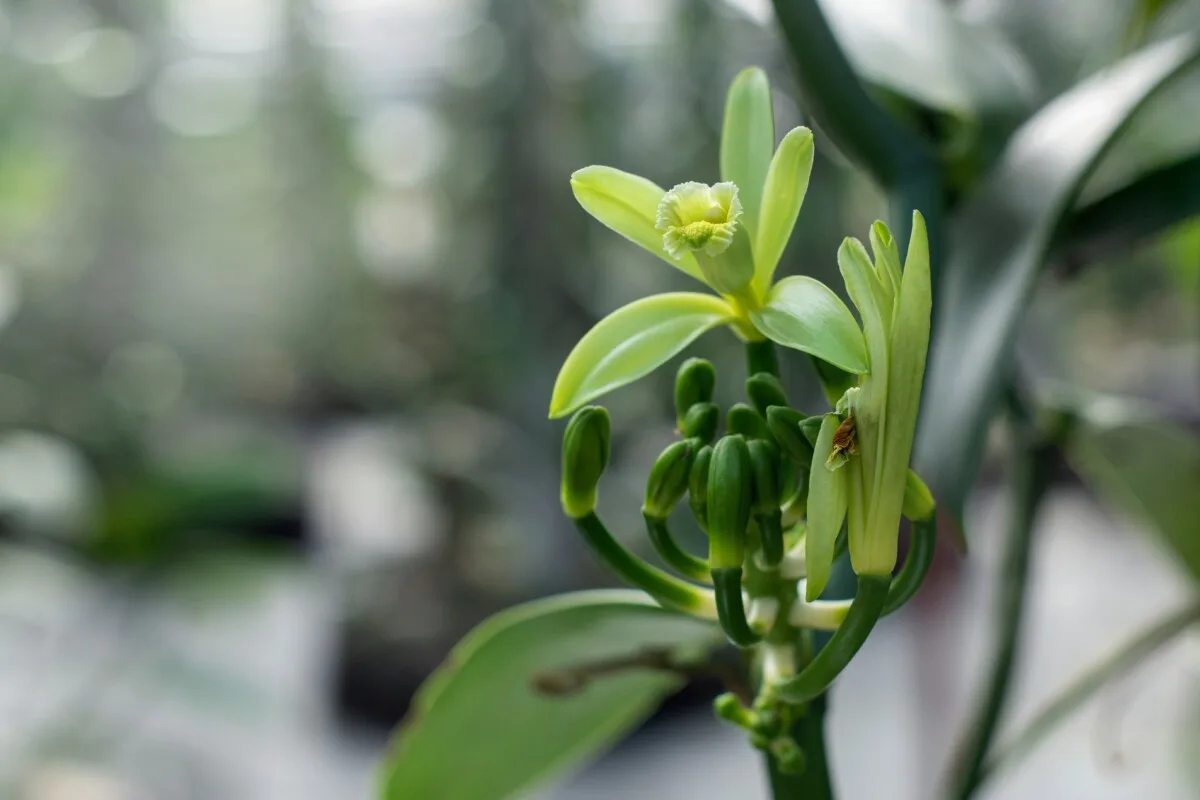
The vanilla plant is the only commercially grown orchid crop. It’s a vine-like plant that tends to attach to tree trunks to support its large, fragrant pods that are harvested for their distinctive flavor.
3. Orchids are Challenging to Grow from Seed
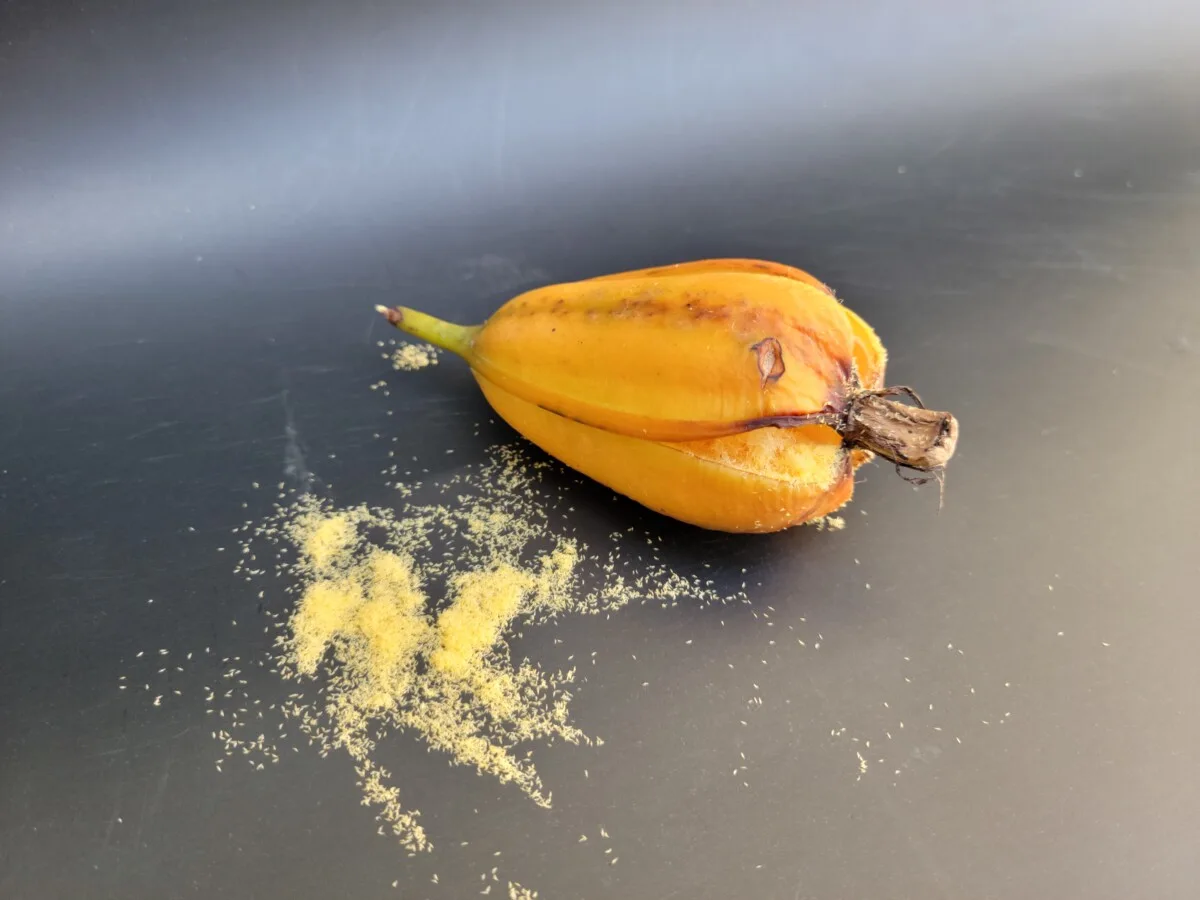
For a plant that’s thrived for millions of years, orchids are notoriously tricky to grow from seed. While a single seed pod can produce up to three million seeds, the seeds are some of the tiniest found in the plant world. Expect to need a microscope to see them.
It can take two or more years for the orchid seeds to germinate and produce leaves, and four to eight years before they bloom. Worst yet, the seeds require contact with specific strains of fungus called mycorrhiza to germinate.
It took decades of research for orchid enthusiasts to learn how to grow the plants from seed, and today, the most popular varieties tend to be cloned instead.
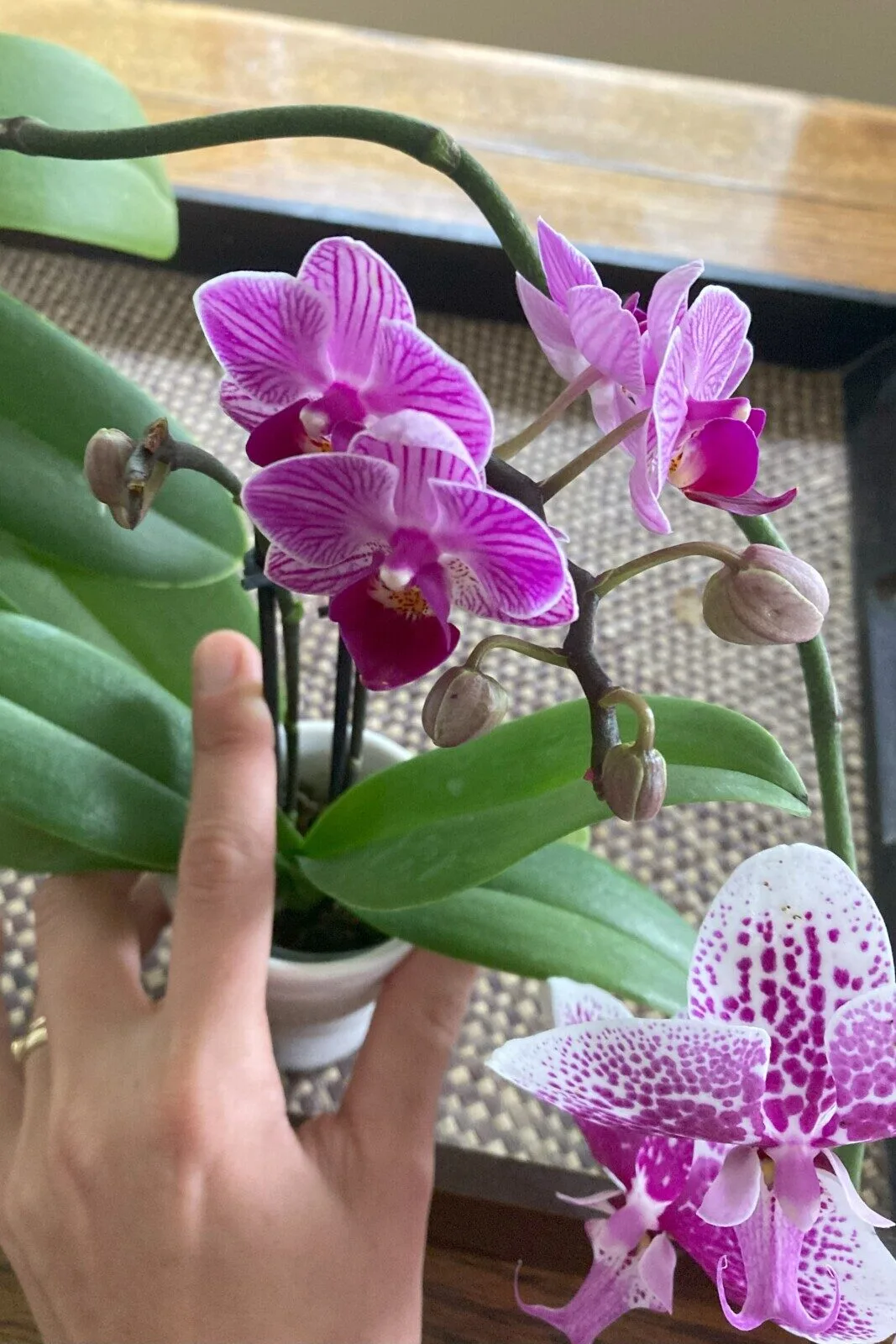
4. They Used to Inspire “Orchidelirium”
The challenge of growing orchids made them wildly popular in the Victorian era. Like the tulip mania, orchidelirium prompted plant collectors to pay exorbitant prices for rare varieties at auction. Professional plant finders would travel the world in search of exotic new species that they make their fortune off.
But despite this passion, success rates were dismal due to a lack of orchid care knowledge. Most buyers were forced to watch their prized plants wilt from heat stress and over-watering.
5. Many Orchids Naturally Grow on Trees
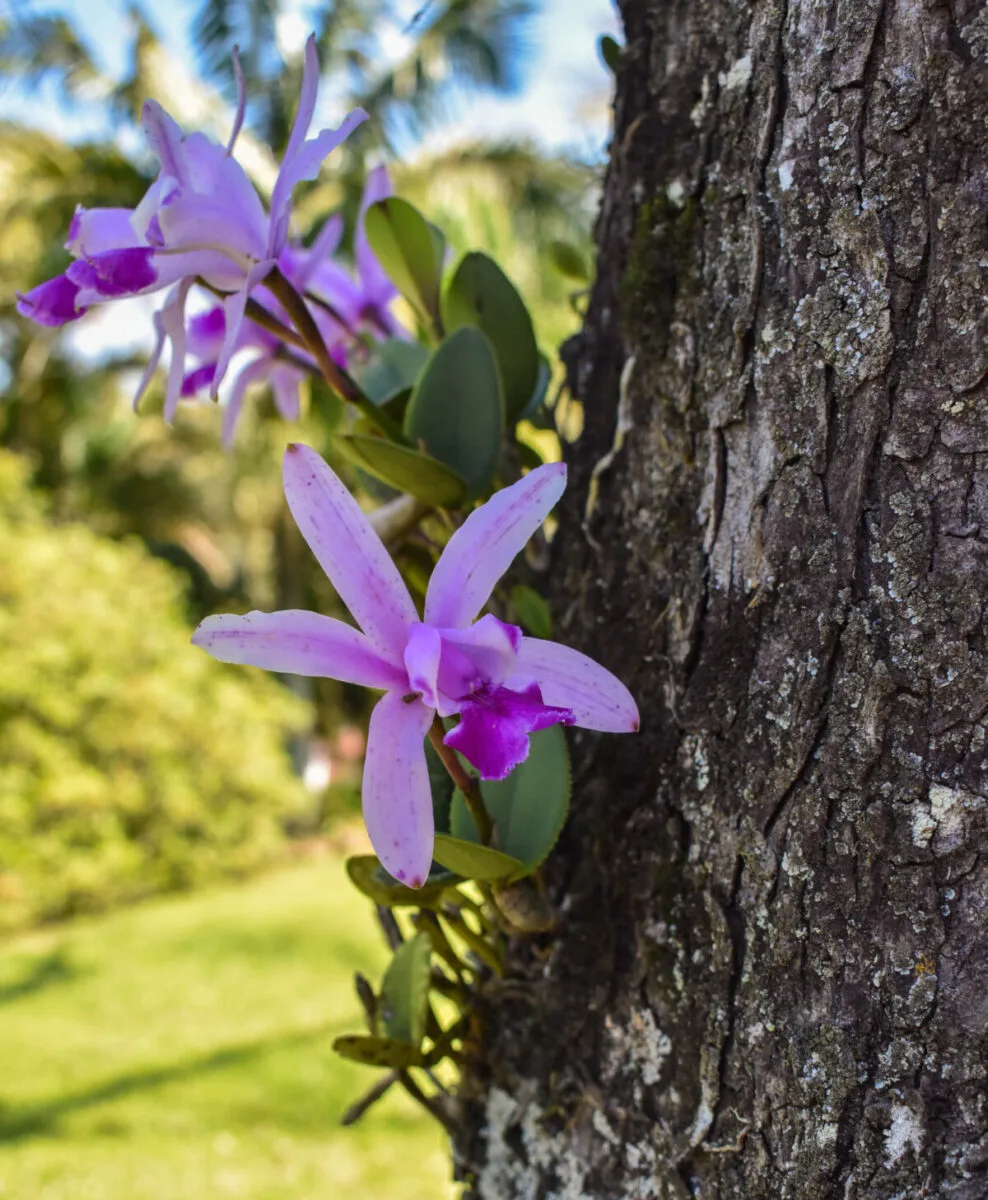
Orchids fall into two categories: epiphytic (air-growing) or terrestrial (earth-growing). Most tropical varieties grow high on tree branches or stumps, primarily pulling moisture and nutrients from the air and decomposing leaves—not soil.
Other types grow in the ground, either with a network of shallow roots or deep tubers. This growing style will dictate the soil requirements for growing an orchid indoors. Epiphytes require a mix of bark, soil, and moss, while terrestrial do best with a more standard soil blend.
6. Orchids are Hypoallergenic
For those with allergies, orchids can offer welcome relief. Orchid pollen isn’t airborne and is stored in waxy packets called pollinia. You aren’t likely to sneeze when exposed to one.
7. Aerial Roots are Common
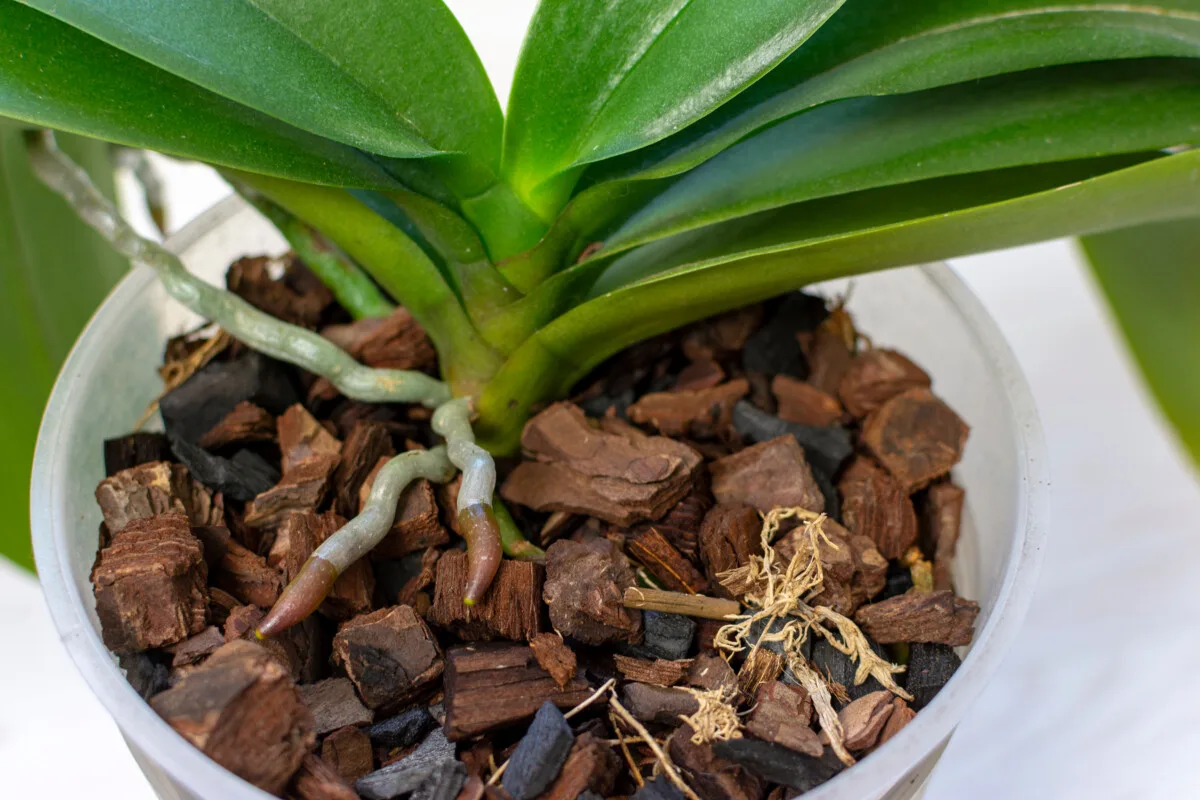
As orchids tend to perch themselves on branches, exposed roots are common, even in planters. That’s normal and a survival strategy to pull extra moisture from the air. You can occasionally mist any exposed roots for the healthiest orchid.
8. Beginners Should Stick with the Moth Orchid
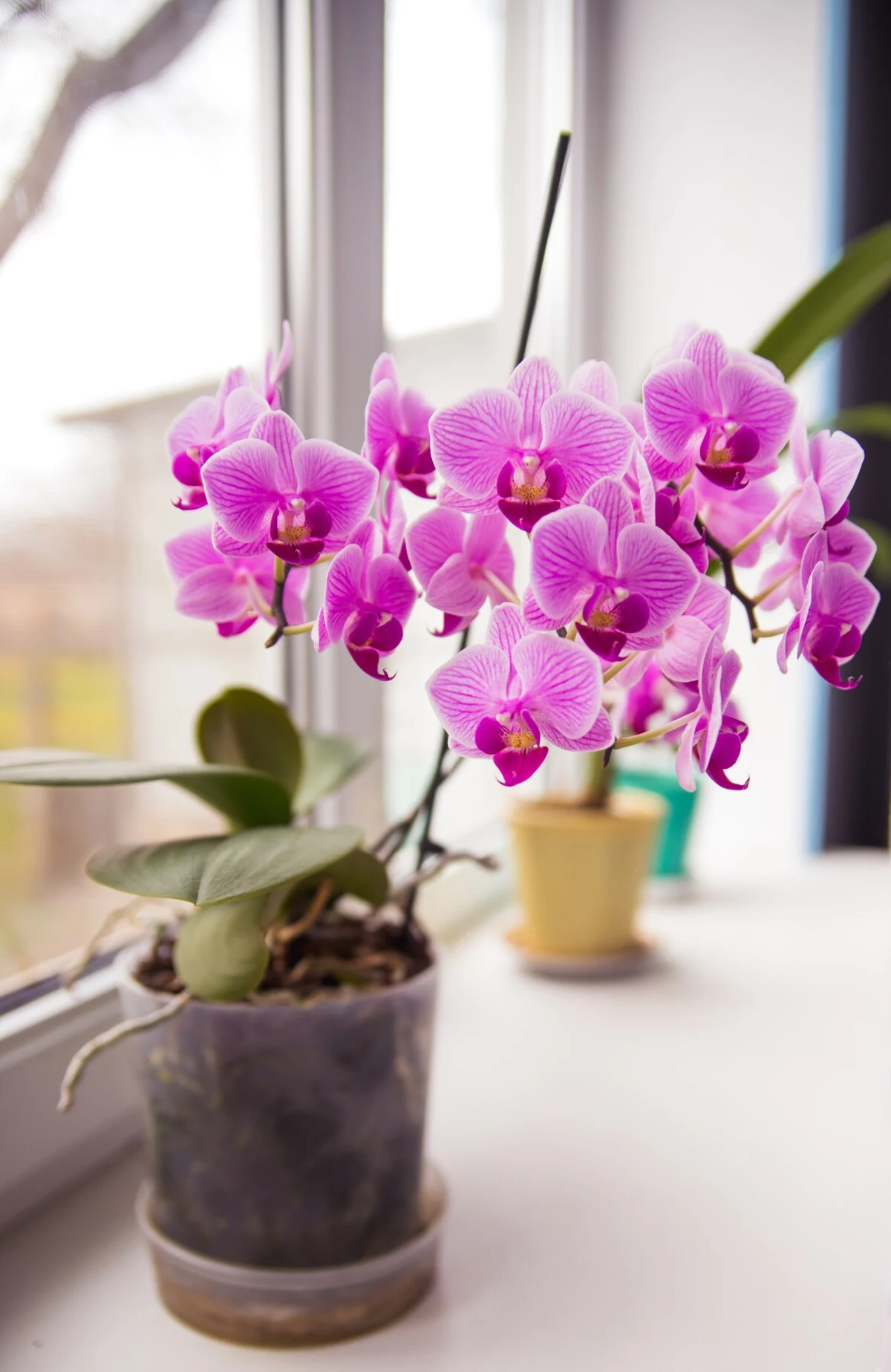
When you picture an orchid, it’s probably the phalaenopsis. This beginner-friendly variety is easy to clone, so it’s prevalent in grocery stores and garden centers worldwide. The flowers can last for months, and the plants are relatively easy to coax into reblooming.
Buy one phalaenopsis, and you can enjoy flowers from it for a decade or longer.
Read Next:
9. Repot Sparingly
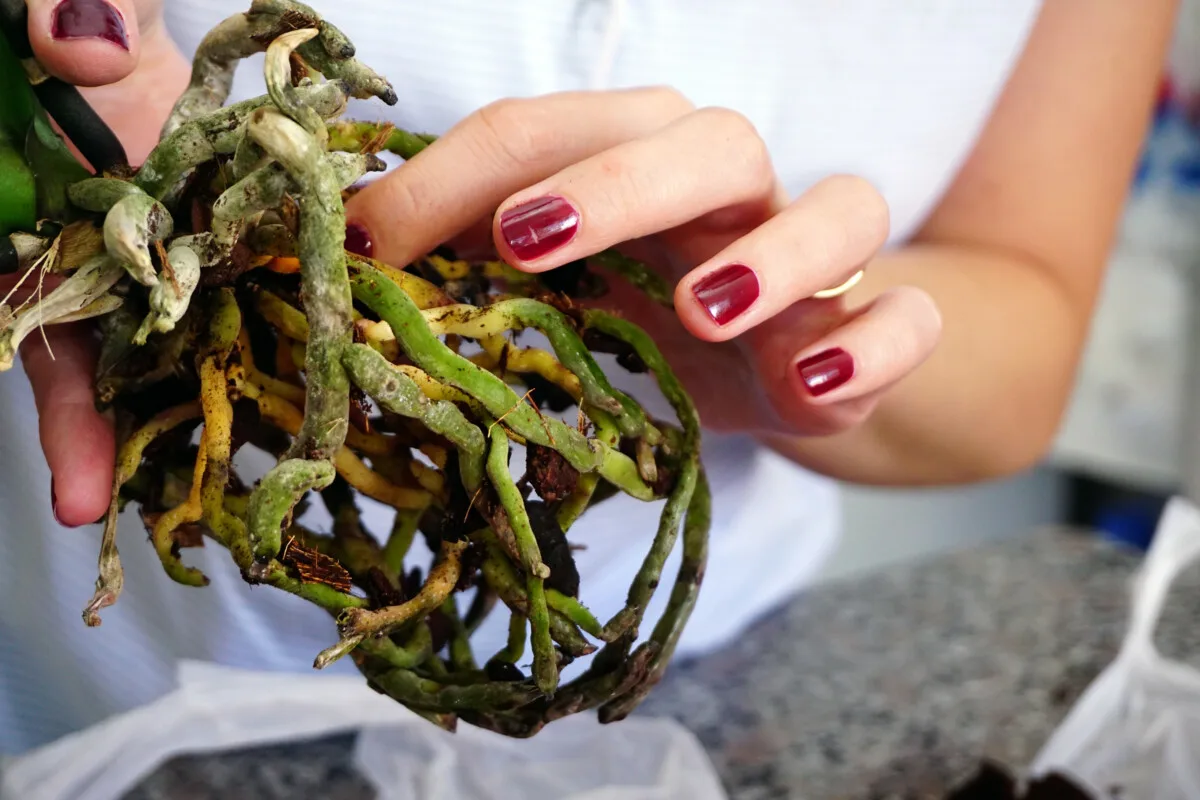
When you see exposed roots on most houseplants, it’s time for a bigger pot. That’s not true for orchids, though, as the plants prefer tight spaces. Don’t consider replanting unless the roots have fully grown through the bottom of the pot or if it’s newly purchased and growing in sphagnum moss. You’ll want to switch this out for an orchid mix instead.
Avoid replanting when orchids are dormant or still flowering. You’ll get better results doing so when the flowers are fading.
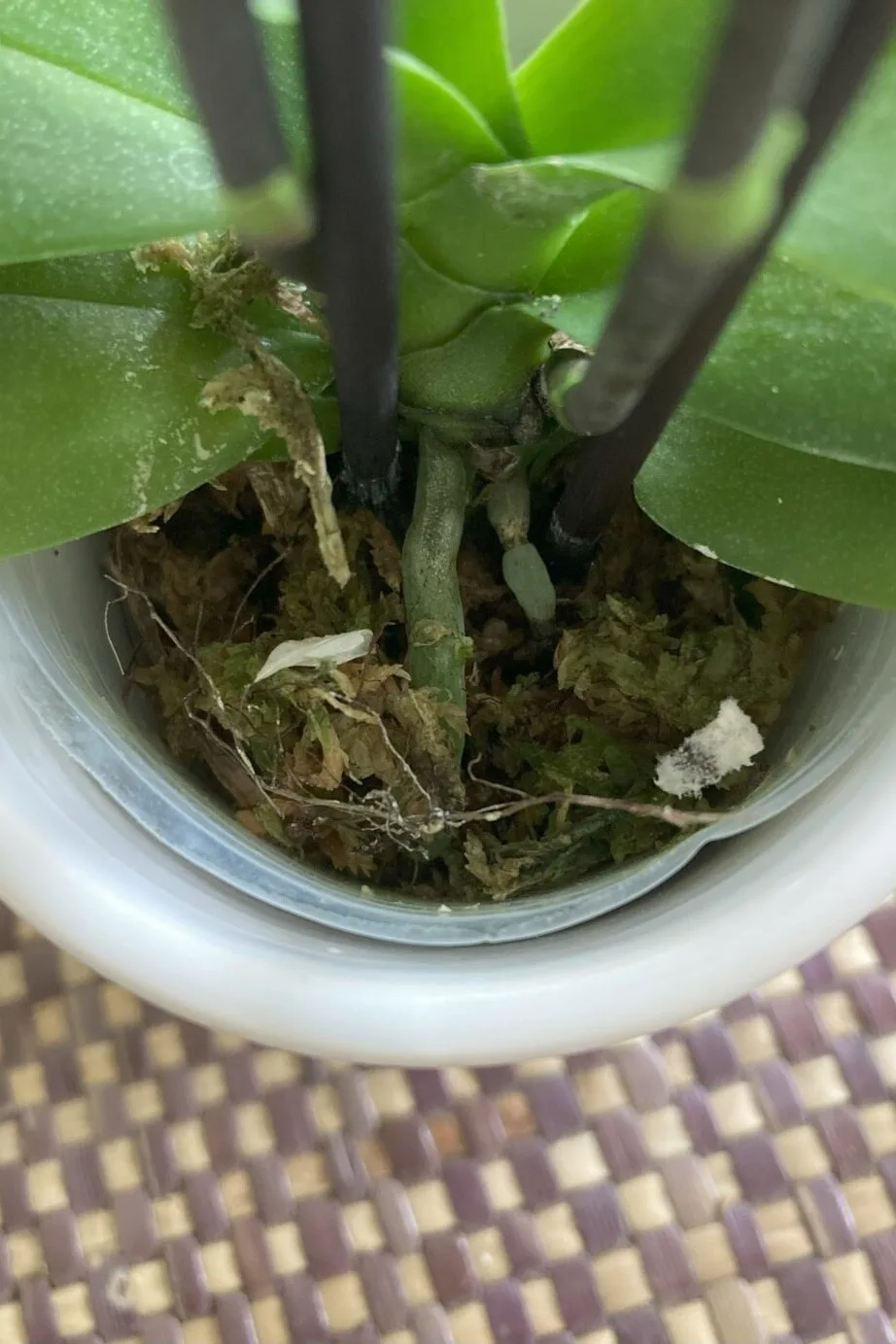
10. Orchid Flowers Can Last for Months
While most flowers bloom for weeks at most, orchids hang on to their thick flowers for months at a time. This makes them a worthwhile investment as indoor décor.
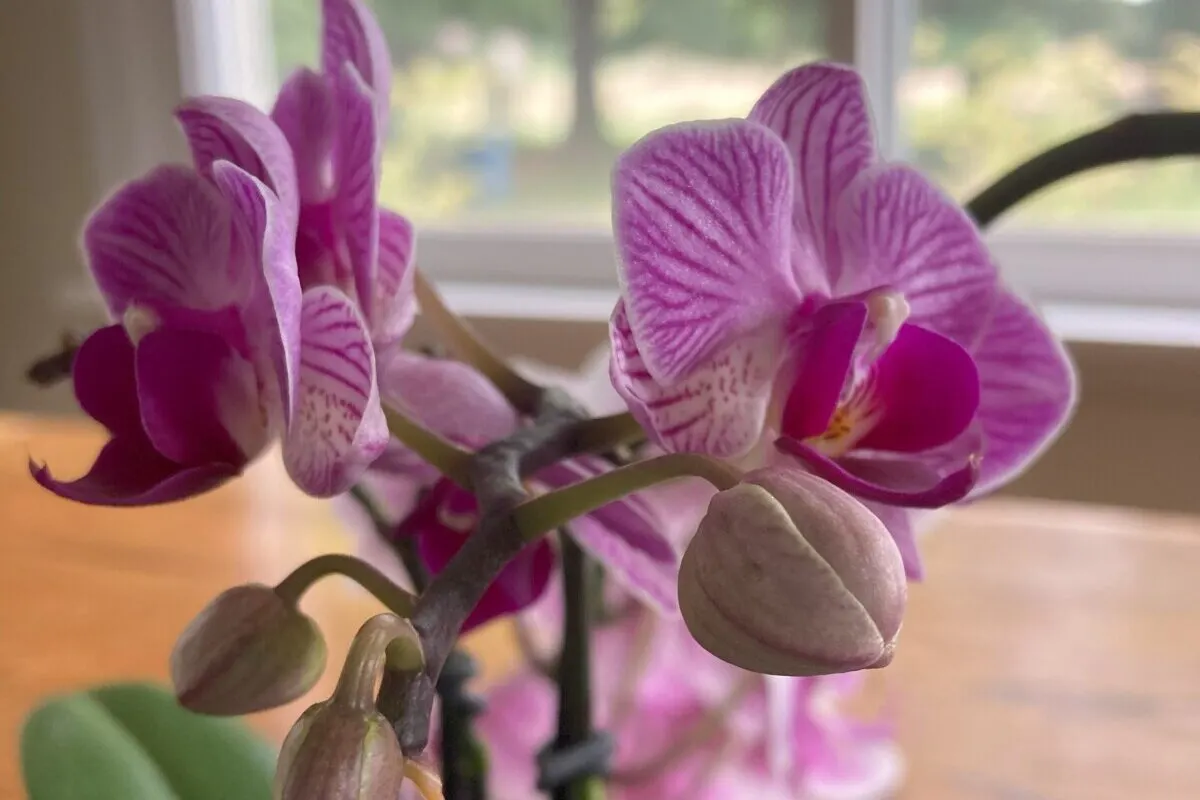
11. Fertilizer is Not Necessarily Your Friend
One common mistake with orchids is overapplying fertilizer. Less is more, as fertilizer use leads to salt build-up that can damage the plants. The plants still need nutrients but do better with low concentrations. It’s best to dilute an orchid fertilizer by ½ or even ¼ and apply it to the base of the plant weekly. One week in four, skip fertilizing entirely.
Refrain from fertilizing during the orchid’s dormancy period and when you first see a new flower spike emerging. You can start again once the buds open.
12. But Temperature Fluctuations Are
While intuition tells us that tropical plants like orchids require consistent temperatures, in reality, they do best with mild temperature fluctuations. You can accomplish this by keeping pots close to windows, as the lack of insulation causes temperatures to drop.
This is crucial for getting an orchid in and out of dormancy and onto flower production.
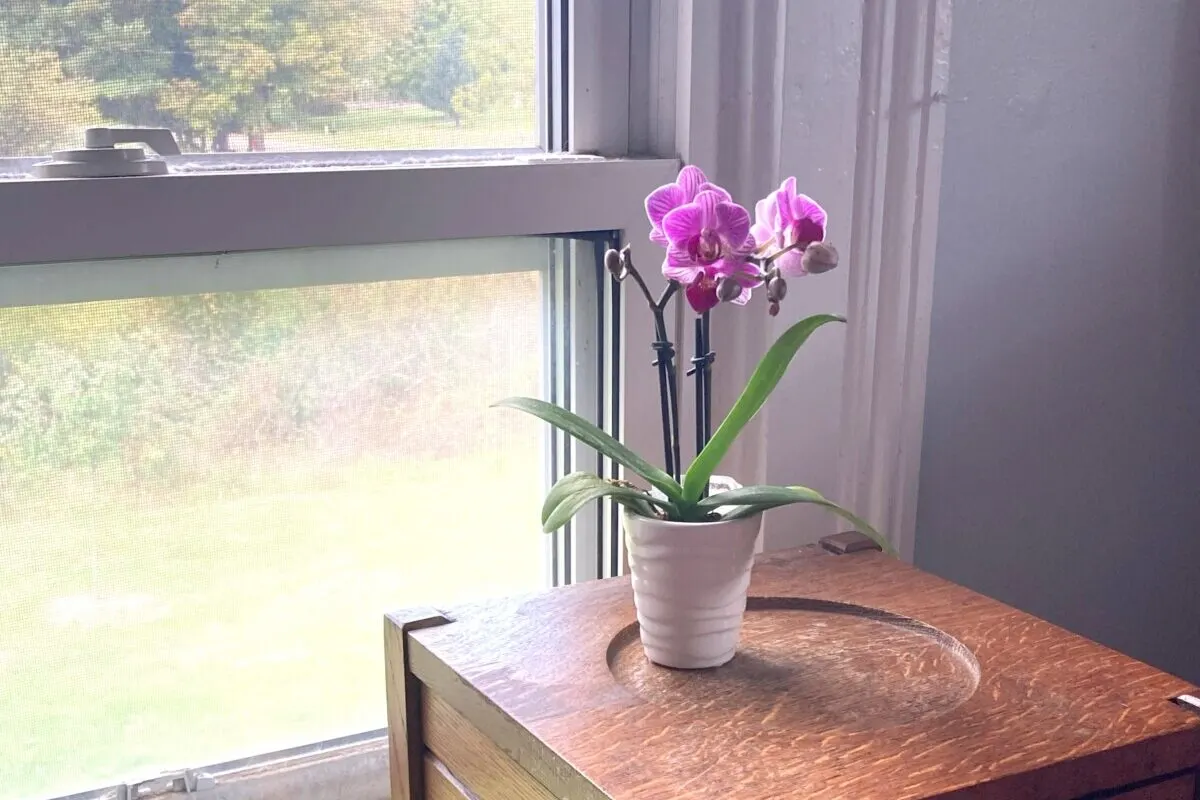
13. Let Them Dry Out
Tempting as it is to give orchids lots of water (many come from the rainforest, after all), they require far less than you would expect. Weekly tends to be plenty. Before watering, stick your finger in the potting mix to determine whether it still feels wet. If so, wait another day before watering.
What shouldn’t dry out, however, are the leaves and blossoms. An occasional mist with a spray bottle should keep the orchid happy.
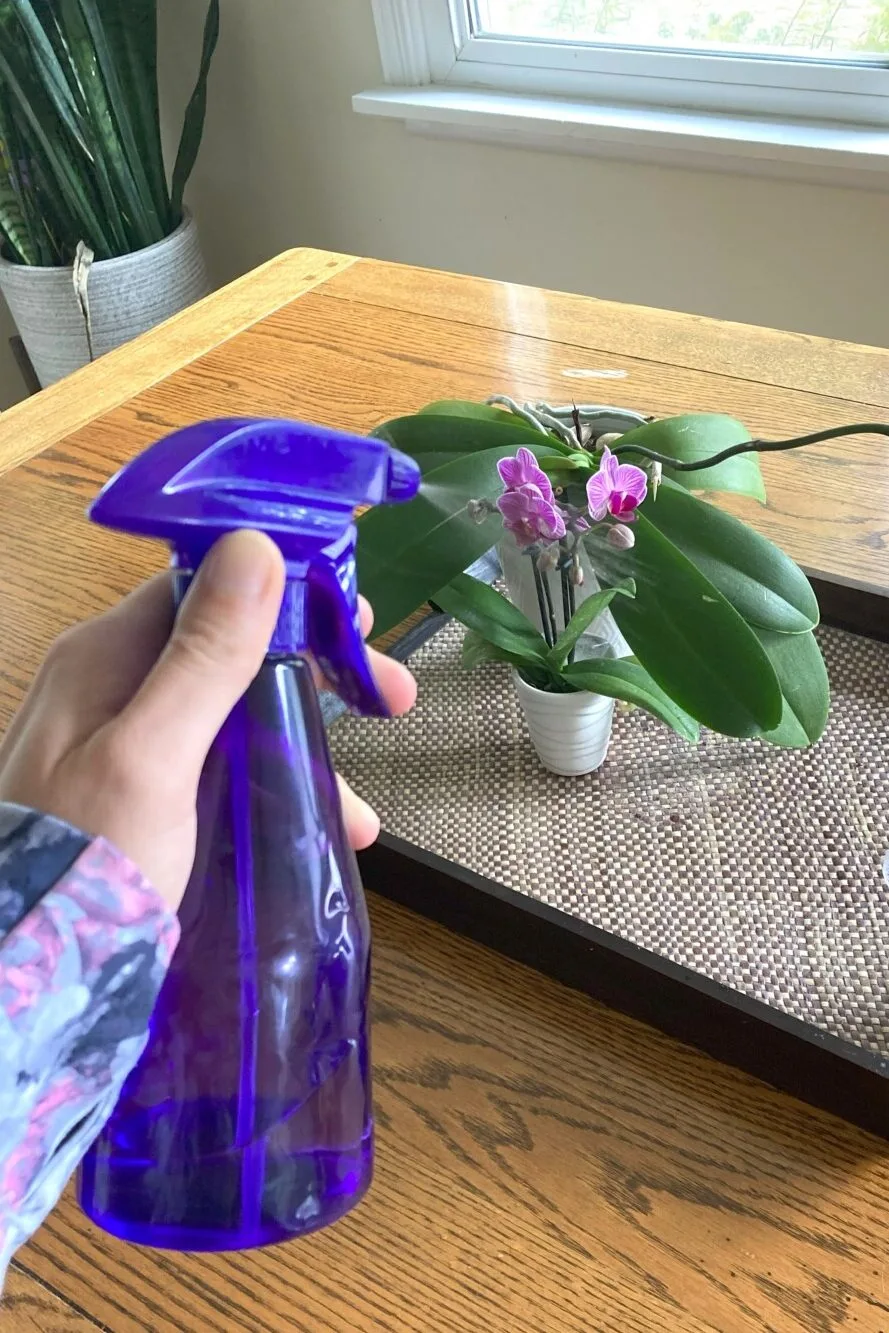
14. Ice Cubes are a Reliable way to Water your Orchids
There’s a lot of debate online about using ice cubes to water your orchids.
Opponents of the idea say that the cold melt water will damage the delicate roots, while proponents of the idea say it’s a reliable and effective way to slowly deliver water to your orchid roots. One of the most popular orchid retailers in the USA are even called Just Add Ice Orchids.
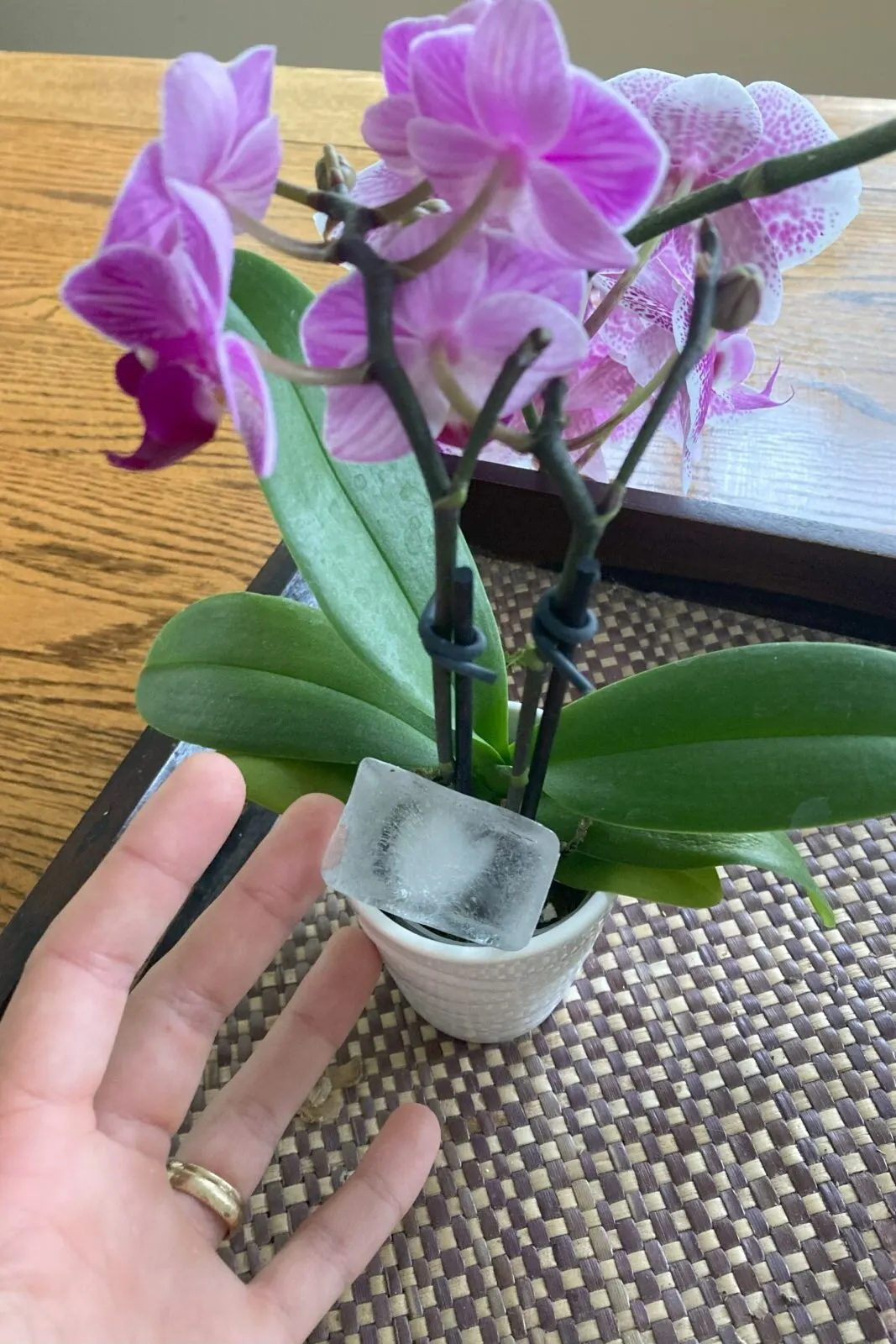
Rural Sprout editor, Tracey, analyzed the science and here’s what she found.
Spoiler alert: The science shows that there is no difference in orchid health when ice was used over water so if ice is a more reliable way for you to keep your orchids hydrated, then go ahead and use it. Just make sure the ice doesn’t come in to contact with the leaves as the cold will cause damage.
15. Keep Things Humid
Give orchids an extra moisture boost by keeping them in a humid environment. Bathrooms and kitchens work well, as does keeping the pot on a pebble tray. You can also cluster plants together to increase the humidity level naturally.
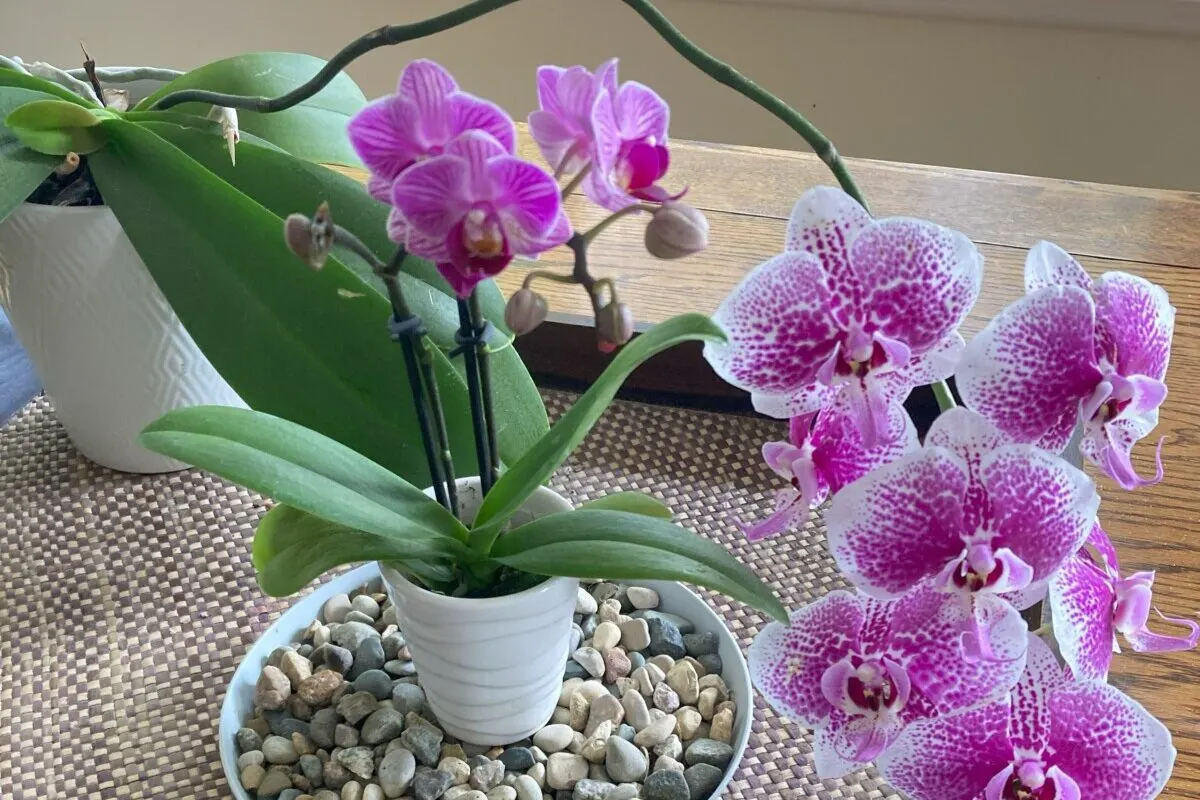
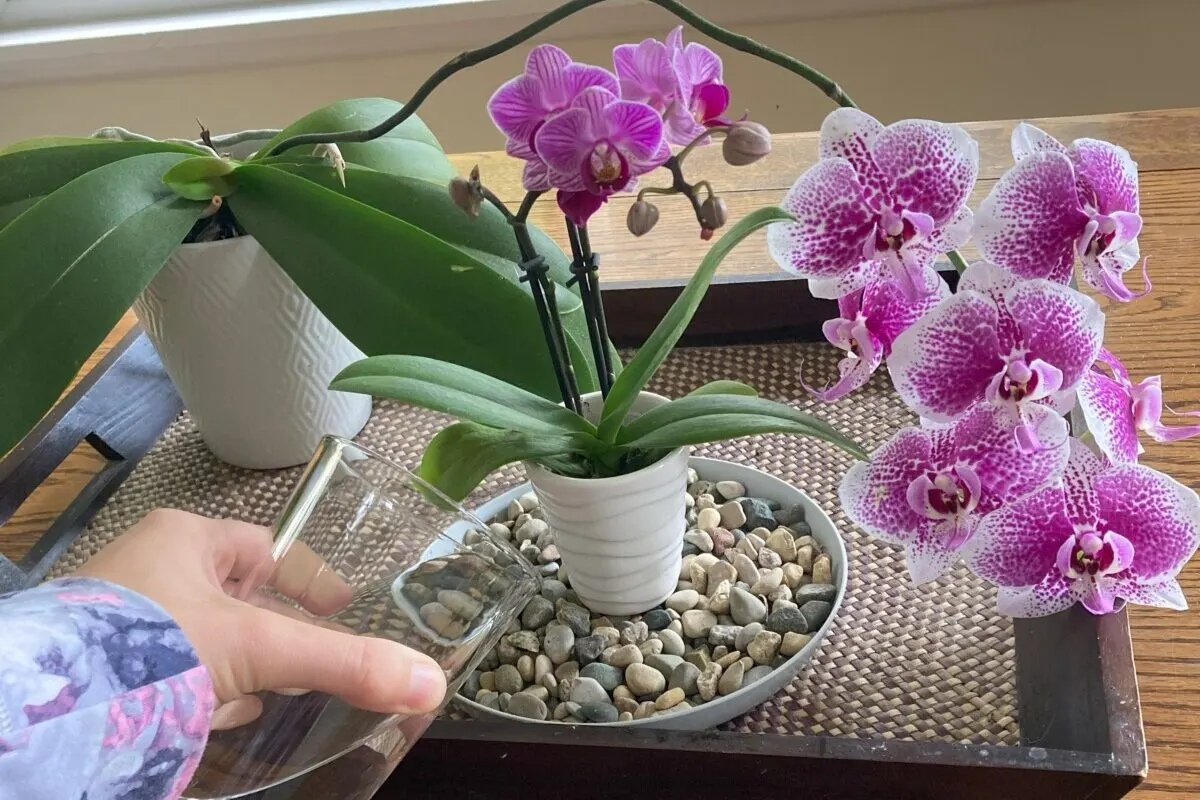
Related Reading: 10 Plants That Thrive In Bathrooms
16. Know The Temperature Requirements
Most orchid varieties fall into one of three temperature groups: warm, intermediate, and cool-growers. Know where yours falls to ensure you can accommodate it.
17. Bright, Indirect Sun is Best
Orchids like (but do not love) sunlight. After all, their natural habitat is nestled into crevasses on tree branches. Keep them out of the hot summer sun, and avoid northern exposure if possible, as it might not offer enough light for reblooming.
If your natural lighting isn’t ideal, consider using artificial lights.
18. Dormancy Is Normal
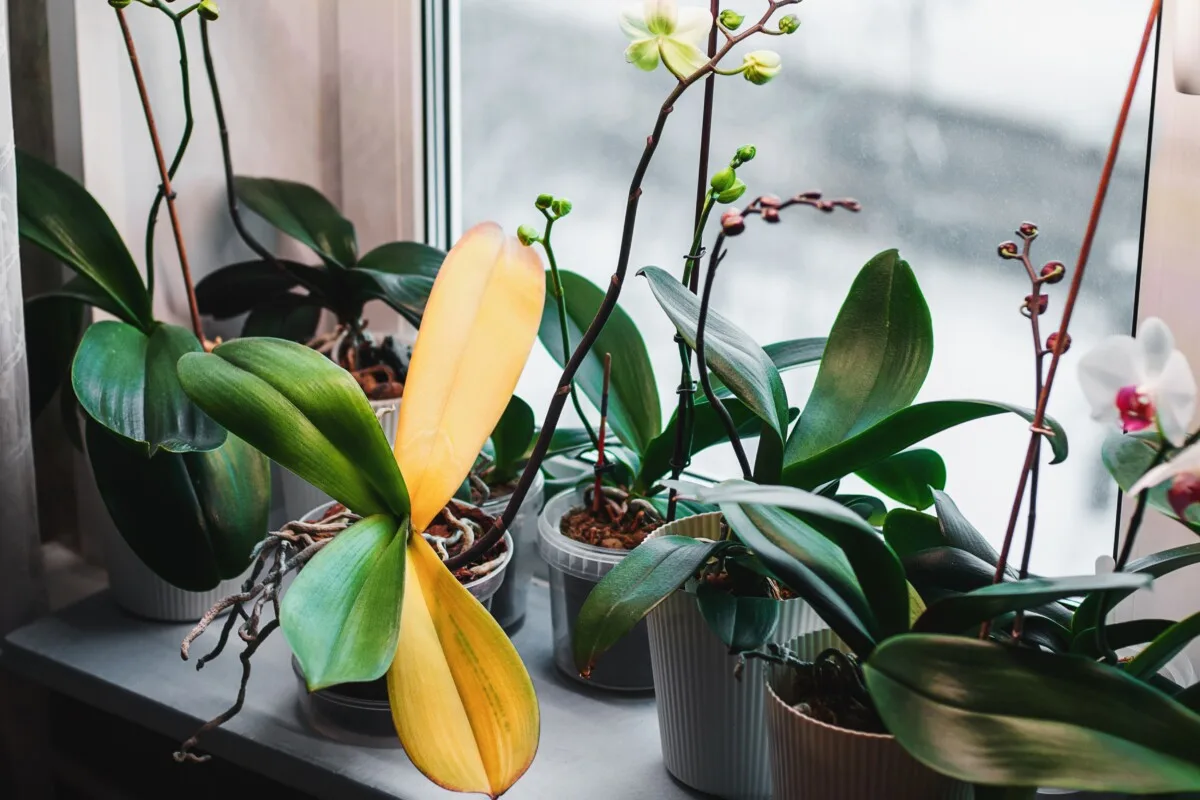
Your orchid won’t do much for large portions of the year. That’s known as dormancy, and it’s completely normal. Allow the plant to have a period of rest by reducing the fertilizing frequency.
19. Orchid Clinics Exist
Is your orchid failing to thrive despite your valiant attempts to revive it? Consider attending an orchid clinic for expert advice on this elusive plant family. Clinic mechanics will vary by location, and many are offered by plant nurseries and garden centers.
Do your research! Many require you to book in advance or pay a small repotting fee.
20. Fans Can Deter Pests and Disease
Orchids are relatively resistant to pest and disease problems. Prevention is the best management strategy, and fresh, circulating air from an open window or gentle fan can work wonders to prevent lingering moisture that could attract mold and fungal problems and deter insects from landing on them.
21. The Roots Reveal All
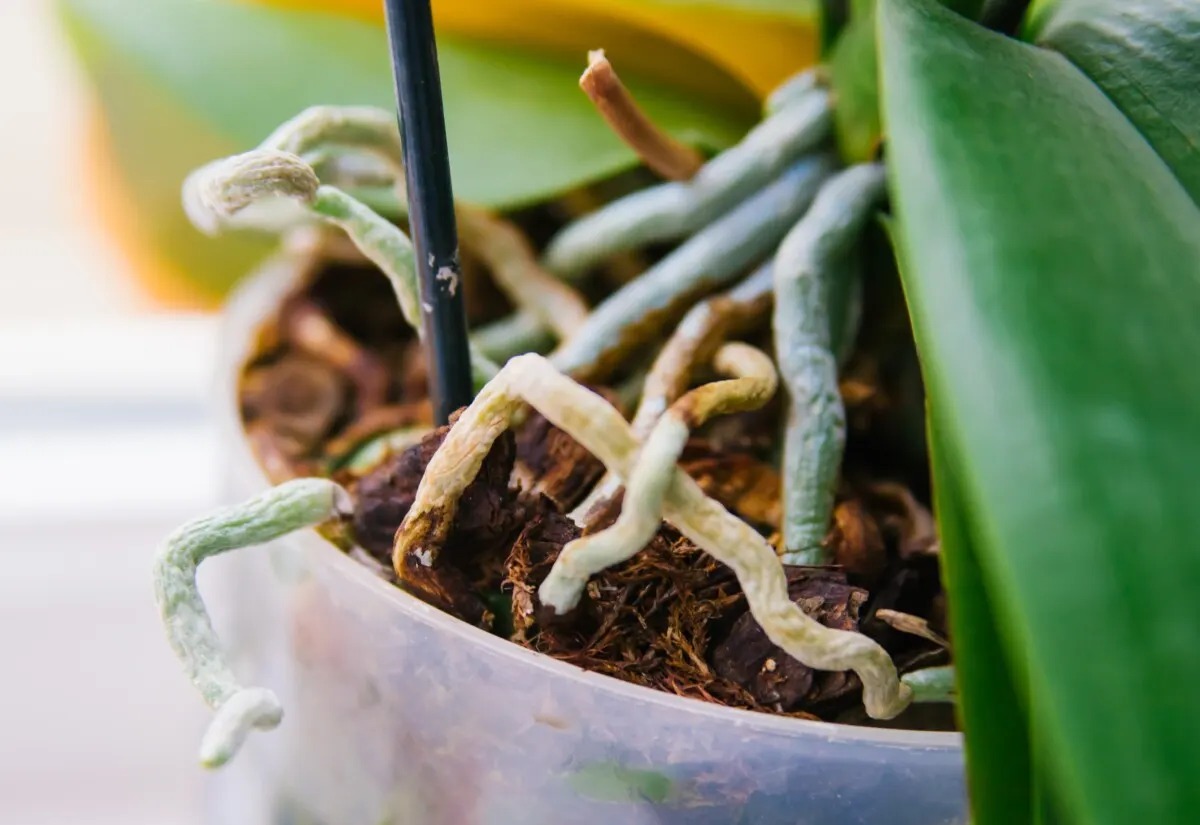
Orchid roots tend to grow near the surface. That gives gardeners an inside look into their plant’s health. If you’re curious whether your orchid is thriving, take a closer look at the roots. Limp, lifeless roots signify too little water, while tan or brittle roots are thirsty.
Silvery green or white roots are dry and healthy, while bright roots were recently watered. If the roots have black tips, there is too much fertilizer salt in the potting mix.
22. Orchids Can Reflower for Decades
Many people buy a blooming orchid and assume it’s at the end of its lifespan as soon as those flowers fade. In fact, orchids can bloom continuously for years, even decades, with the right treatment.
Here’s our guide to help your orchid to bloom again… and again… and again.

Get the famous Rural Sprout newsletter delivered to your inbox.
Including Sunday musings from our editor, Tracey, as well as “What’s Up Wednesday” our roundup of what’s in season and new article updates and alerts.


